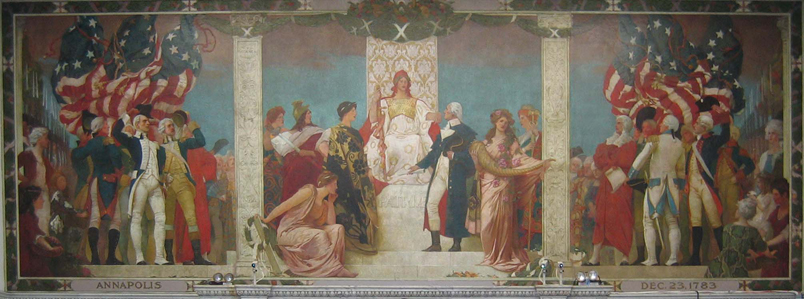Thanks to William M. Dunn, Master in Chancery of the Circuit Court for Baltimore City for contributing a guest post on the history of Baltimore’s Clarence Mitchell, Jr. Courthouse. William Dunn and a generous group of volunteers welcome visitors to the Courthouse most weekdays from noon to 1:00pm at the Museum of Baltimore Legal History. Stop in and pick up the museum’s new self-guided walking tour brochure (also available to check out on Facebook or at the Baltimore Bar Library) by Master Dunn and his colleague James Schneider, Judge for the U.S. Bankruptcy Court for the District of Maryland. Small group tours may be available on request – contact William Dunn at 410.396.3304 or william.dunn@mdcourts.gov for more information.
 In 1885, Baltimore City set out to build the most beautiful Courthouse in the country. Fifteen years, and $2.2 million later ($56 million adjusted for inflation), that goal was realized. On January 6, 1900, the Baltimore Sun reported that the City of Baltimore had built a “temple of justice, second to no other in the world.” The building, which is a magnificent exemplification of Renaissance Revival architecture, continues to stand as a monument to the progress of the great city of Baltimore, and to the importance of the rule of law.
In 1885, Baltimore City set out to build the most beautiful Courthouse in the country. Fifteen years, and $2.2 million later ($56 million adjusted for inflation), that goal was realized. On January 6, 1900, the Baltimore Sun reported that the City of Baltimore had built a “temple of justice, second to no other in the world.” The building, which is a magnificent exemplification of Renaissance Revival architecture, continues to stand as a monument to the progress of the great city of Baltimore, and to the importance of the rule of law.
Today, this main building in the Baltimore City Circuit Court complex is referred to as the Clarence M. Mitchell, Jr. Courthouse in honor of the local lawyer and nationally respected civil rights leader. Most of the original splendor of this massive building can still be enjoyed, including the granite foundation, marble facades, huge brass doors, mosaic tiled floors, mahogany paneling, two of the world’s most beautiful courtrooms, domed art skylights, gigantic marble columns, and beautifully painted murals. In addition, the Courthouse is home to one of the oldest private law libraries in the country, and to the Museum of Baltimore Legal History.

The exterior foundation of the Clarence M. Mitchell, Jr. Courthouse was built from granite quarried in Howard County, while the exterior walls are crafted from white marble quarried in Baltimore County. The Calvert Street exterior façade is especially outstanding, as it displays eight of the largest monolithic columns in the world, each weighing over 35 tons and measuring over 35 feet in height. The interior of the building is even more impressive. Among the many historic spaces, the Supreme Bench Courtroom is one of the finest. The circular courtroom is like no other in the world. It is surmounted by a coffered dome resting upon sixteen columns of Sienna marble from the Vatican Quarry in Rome. Inscribed upon the frieze around the base of the dome are the names of Maryland’s early legal legends.
Other fascinating rooms include the Old Orphans Courtroom (which houses the Museum of Baltimore Legal History); the Ceremonial Courtroom, and the Bar Library (described as one of the most elegant interior spaces in Baltimore, with its paneled English oak walls and barrel-vault ceiling punctuated by forty art glass skylights).

Also noteworthy for its artistic beauty are the two domed stained-glass skylights above the stairs in Kaplan Court which depict the goddesses of Justice, Mercy, Religion, Truth, Courage, Literature, Logic and Peace. In addition, the courthouse has six original murals from world renowned artists depicting various civic and religious scenes. Those murals include: Calvert’s Treaty with the Indians; The Burning of the Peggy Stewart; Washington Surrenders His Commission; Religious Toleration; The Ancient Lawgivers; and The British Surrender at Yorktown.
